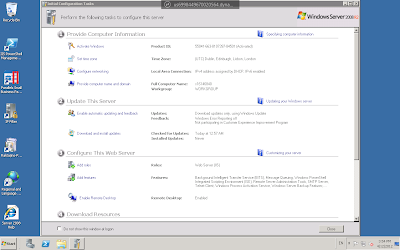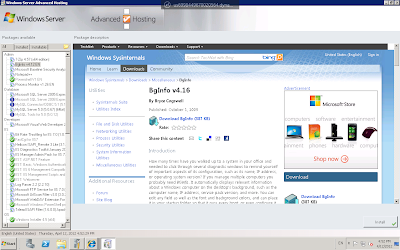1&1 Dynamic Cloud Server

Hosted Windows and Linux servers that let you pay for CPU, RAM and storage by the hour — for small business not just enterprise: is a Dynamic Cloud Server a good way to scale a business web service?
Usually, when you pay for a hosted server, you pick the specification you think you need and pay for extra bandwidth if you need it. Or you go the whole hog and run on a cloud platform like Azure or AWS that scales the service you need up and down as appropriate. 1&1 is offering something between the two; a familiar Linux or Windows Server 2008 R2 system that starts out as the spec you think you want (a reasonable £29.99 + VAT per month for a single core, 1GB RAM, 100GB of storage server), but that you can scale up and down on demand.
Log into your dynamic server and it looks much like any other Windows Server 2008 R2 system
It takes about five minutes to add or remove cores, memory or storage once you've shut your virtual machine down, and you pay a few pence for the extra capacity, by the hour. You can add extra cores or increments of 1GB of RAM or 100GB of storage. So if you're sending out a email newsletter that you hope will get you more traffic, with an offer that's only valid for the next few hours, you can give the server more power for just those few hours, and extra storage, and then throttle it back down when the rush is over.
The control panel for changing the configuration of your server is simple; there are sliders for processing, memory and storage and you can see exactly how much the new configuration will cost you before you approve it.
When you need more storage, faster processing or more memory for a short time, you can dial up the power
Unlike cloud platform services, the system doesn't scale just because it's busy; you're always in control, but you also have to go and make the changes by hand. You do also have to shut your VM down for a few minutes while the Xen system on which the dynamic server is running allocates more resources, so you'd have to have a second VM running if you need to be available continuously and be able to scale up and down.
Connect to your Windows Server with Remote Desktop and you'll find some useful extras, from desktop wallpaper that reminds you of the configuration and IP address of the server to a package manager with links to a variety of useful tools from Notepad++ and Process Explorer to MySQL to Drupal, Joomla and DotNetNuke. Pick a web app and you'll be prompted to install any prerequisites first, which is a handy time saver.
A handy package manager simplifies installing utilities and applications on your server
If you don't want to use Remote Desktop (or you pick a Linux server), you can remote in from the 1&1 Control Panel using the Java-based VNC Remote Console, or you can log into the Parallels Plesk instance included with the hosting package. This gives you the same kind of tools you'd find in Server Manager but remotely; you can schedule backups, manage databases and email, tweak spam filters, stop and start system services and so on. 1&1 also provides mobile administration and monitoring tools for iOS and Android, so you can keep an eye on the server.
If you're not needing to change capacity that often, there's no point paying extra for the flexibility, especially as you can't live migrate to more capacity. But if you're looking for a pay-as-you go hosting service, 1&1's package gives you the granularity of a cloud service with the familiarity of a server that can run the applications you'd run on any other server instead of writing a custom app to suit a cloud platform or paying extra to run a standard server image on a cloud platform that's optimised for a different development style. Think of it as getting the advantages of cloud without having to change the way you work.
Mary Branscombe


